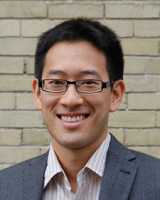16 Aug One-in-Five Cardiac Arrests Occur Near Inaccessible Defibrillators
MedicalResearch.com Interview with:
Timothy C. Y. Chan, PhD
Canada Research Chair in Novel Optimization and Analytics in Health
Associate Professor, Mechanical and Industrial Engineering
Director, Centre for Healthcare Engineering
Department of Mechanical & Industrial Engineering
Faculty of Applied Science & Engineering | University of Toronto
Toronto Ontario
MedicalResearch.com: What is the background for this study? What are the main findings?
Response: The immediate access to and use of an automated external defibrillator (AED) can increase the likelihood of survival from out-of-hospital cardiac arrest (OHCA). Currently, guidelines for AED deployment focus only on spatial factors, such as where to place AEDs with respect to cardiac arrest risk, and assume that the buildings housing the AEDs are open and accessible 24 hours a day. However, this is not the case in reality.
AED accessibility by time of day has largely been overlooked despite the fact that cardiac arrest incidence and survival vary by time of day and day of week. In this study we performed two main analyses, using data from Toronto, Canada.
First, we determined the impact of accessibility on cardiac arrest coverage. That is, we determined what fraction of OHCAs occurred near a registered AED, but when that AED was unavailable based on the hours of operation of the building.
Second, we developed a novel optimization model that identifies locations to place AEDs that maximize the number of out-of-hospital cardiac arrestswith an accessible AED nearby. We compared this approach to one where AEDs were placed guided by only spatial information.
We found that of the OHCAs occurring within 100 m of an AED, approximately 21% occur when the AED is inaccessible. Nearby AEDs were inaccessible for 8.6% of OHCAs during the day (8 a.m. – 3:59 p.m.), 28.6% in the evening (4 – 11:59 p.m.) and 48.4% at night (midnight –7:59 a.m.). When applying our optimization model to determine new AED locations, we achieved a 25.3% relative increase in the number of out-of-hospital cardiac arrests that occur near an accessible AED over the spatial-only approach. The relative increase was 10.9% during the day, 38.0% in the evening, and 122.5% at night.
MedicalResearch.com: What should readers take away from your report?
Response: Temporal availability is a critical factor to consider in both the evaluation of current AED programs as well as the decision on where to locate AEDs. Of all cardiac arrests occurring within 100 m of an existing AED, about one in five cardiac arrests that occur are near an inaccessible AED. We found that our AED placement optimization model provided the largest improvement during the night, which was precisely when the largest loss in coverage due to limited temporal accessibility was experienced, as well as when survival was lowest. Mathematical optimization approaches can useful in as an assistive tool to help determine public AED locations.
MedicalResearch.com: What recommendations do you have for future research as a result of this study?
Response: We hope that future research and AED placement policies will include the effects of temporal accessibility. Specifically, buildings with 24/7 access should be considered when choosing public AED locations, wherever possible.
MedicalResearch.com: Thank you for your contribution to the MedicalResearch.com community.
Citation:
Note: Content is Not intended as medical advice.
Please consult your health care provider regarding your specific medical condition and questions.
[wysija_form id=”5″]
Last Updated on August 16, 2016 by Marie Benz MD FAAD

